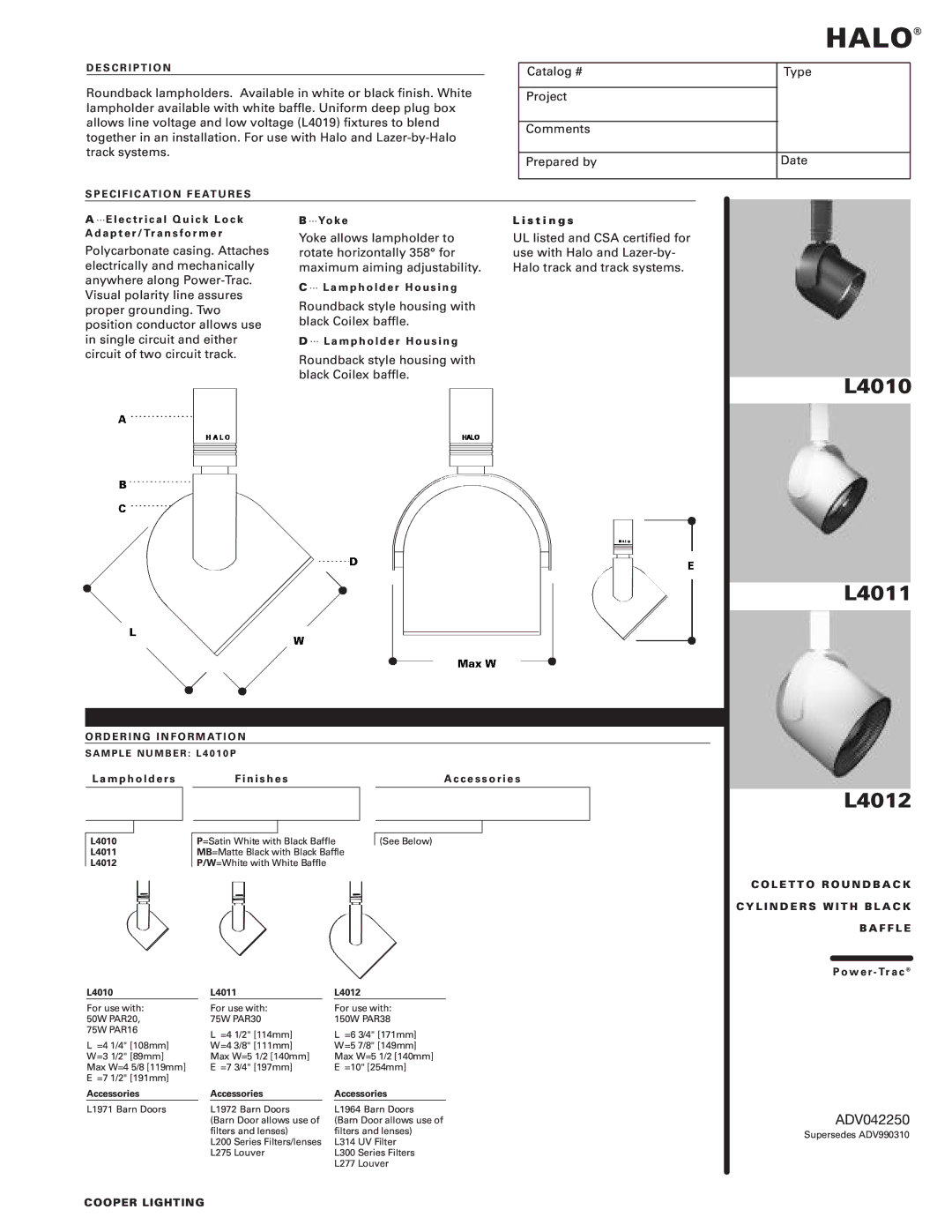L4010, L4012, L4011 specifications
Cooper Lighting is renowned for its innovative approach to lighting solutions, and its L4011, L4012, and L4010 models exemplify this commitment to excellence in design, functionality, and energy efficiency. Each of these models is tailored to meet the diverse needs of various applications, whether in commercial, residential, or industrial settings.The L4011 model stands out for its advanced LED technology, providing exceptional illumination while ensuring energy savings. Its compact design allows for easy integration into a variety of spaces, from offices to retail environments. The L4011 features a robust housing that enhances durability, making it suitable for high-traffic areas. One of its main characteristics is the excellent color rendering index (CRI), which ensures that colors appear vibrant and true-to-life, enhancing visual clarity and comfort.
Moving to the L4012, this model boasts a higher lumen output, making it ideal for larger spaces that require substantial lighting. The L4012 incorporates cutting-edge thermal management technology, which ensures that the LED components operate efficiently and have an extended lifespan. Additionally, it offers multiple wattage options to cater to specific project requirements. With its sleek, contemporary look, the L4012 is not only functional but also enhances the aesthetic appeal of any environment.
The L4010 model is designed with versatility in mind, featuring adjustable beam angles that allow users to customize the light distribution according to their specific needs. This adaptability makes it particularly useful in applications such as galleries or showrooms, where spotlighting certain areas is crucial. Like its counterparts, the L4010 also emphasizes energy efficiency, contributing to lower operational costs and a reduced carbon footprint.
All three models integrate smart technology, allowing for seamless connectivity with building management systems. This feature enhances control over lighting schedules, dimming options, and energy usage monitoring, leading to more intelligent and sustainable lighting solutions. With their combination of advanced features, stylish designs, and versatile applications, the Cooper Lighting L4011, L4012, and L4010 models represent exceptional options for anyone seeking reliable and efficient lighting for modern spaces. These innovations reaffirm Cooper Lighting's dedication to providing high-quality lighting solutions that meet the evolving demands of the marketplace.

